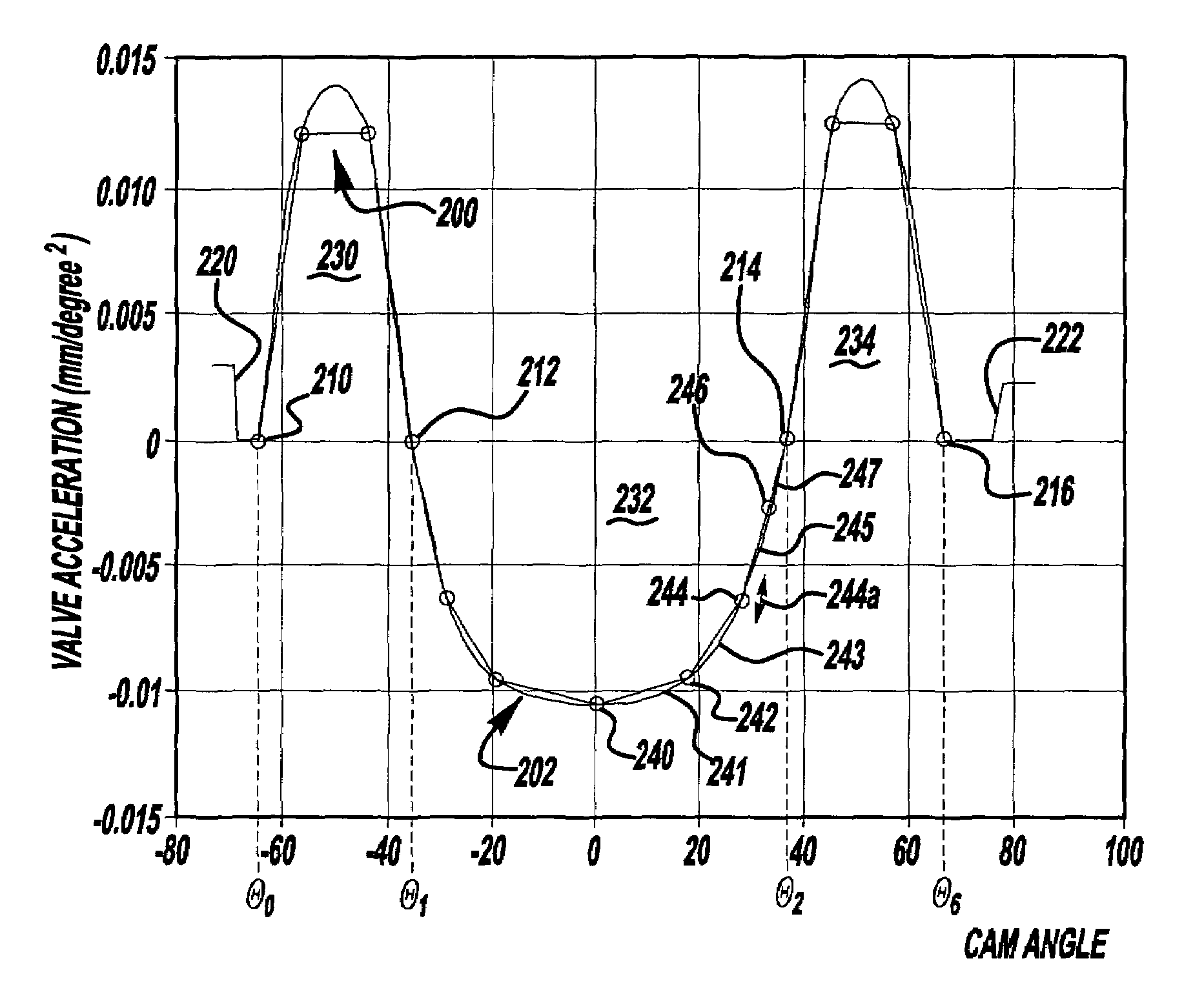Method for producing a constraint-satisfied cam acceleration profile
a technology of acceleration profile and cam, which is applied in the direction of valve drives, machines/engines, instruments, etc., can solve the problems of inability to meet the constraints of valve motion in the initial profile without adjusting the initial profile, failure to achieve the known approach, and inability to deliver a highly precise solution
- Summary
- Abstract
- Description
- Claims
- Application Information
AI Technical Summary
Benefits of technology
Problems solved by technology
Method used
Image
Examples
Embodiment Construction
[0017]Suppose I(θ) defines valve lift as a function of the rotation angle θ of the cam producing that lift. The second derivative of I with respect to θ is commonly referred to as the valve acceleration profile a(θ).
[0018]FIG. 2 shows an example valve acceleration profile for a cam, such as cam 101 of FIG. 1. The horizontal axis indicates cam angle. Cam angle zero corresponds to maximum lift—i.e., the angle where the nose of a cam lobe 101a contacts the follower 103. Negative angles correspond to valve motion induced by the opening side of the cam lobe and positive angles indicate motion induced by the closing side of that lobe.
[0019]The square waves 220 and 222 on the left and on the right of FIG. 2 are respectively called the opening and closing ramps of the acceleration profile. Acceleration is zero from angle −180° to the beginning of the opening ramp, and from the end of the closing ramp to +180° . Between the two ramps lies a typical valve acceleration curve, often called an a...
PUM
 Login to View More
Login to View More Abstract
Description
Claims
Application Information
 Login to View More
Login to View More - R&D
- Intellectual Property
- Life Sciences
- Materials
- Tech Scout
- Unparalleled Data Quality
- Higher Quality Content
- 60% Fewer Hallucinations
Browse by: Latest US Patents, China's latest patents, Technical Efficacy Thesaurus, Application Domain, Technology Topic, Popular Technical Reports.
© 2025 PatSnap. All rights reserved.Legal|Privacy policy|Modern Slavery Act Transparency Statement|Sitemap|About US| Contact US: help@patsnap.com



